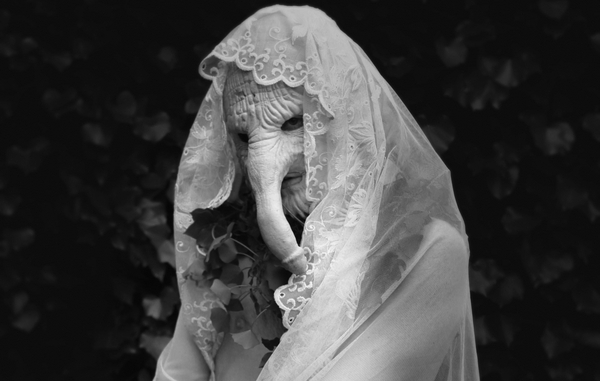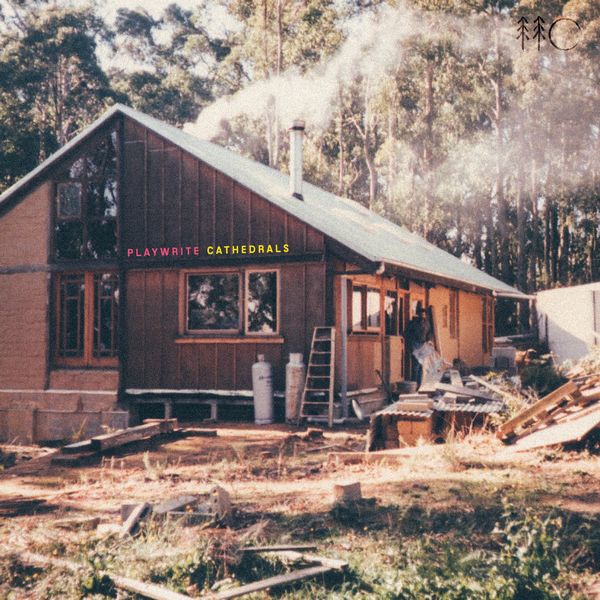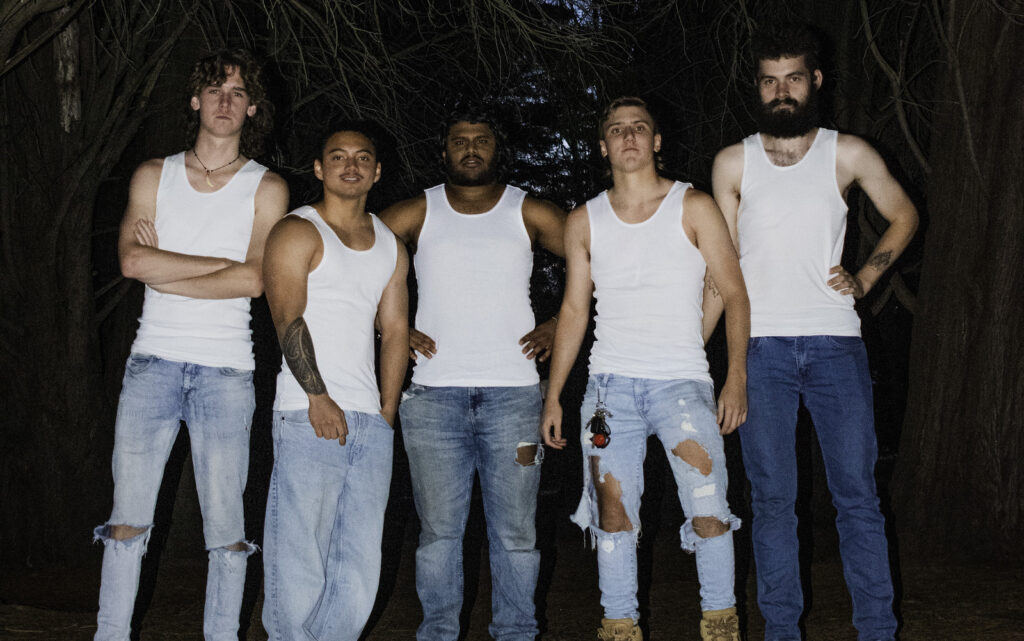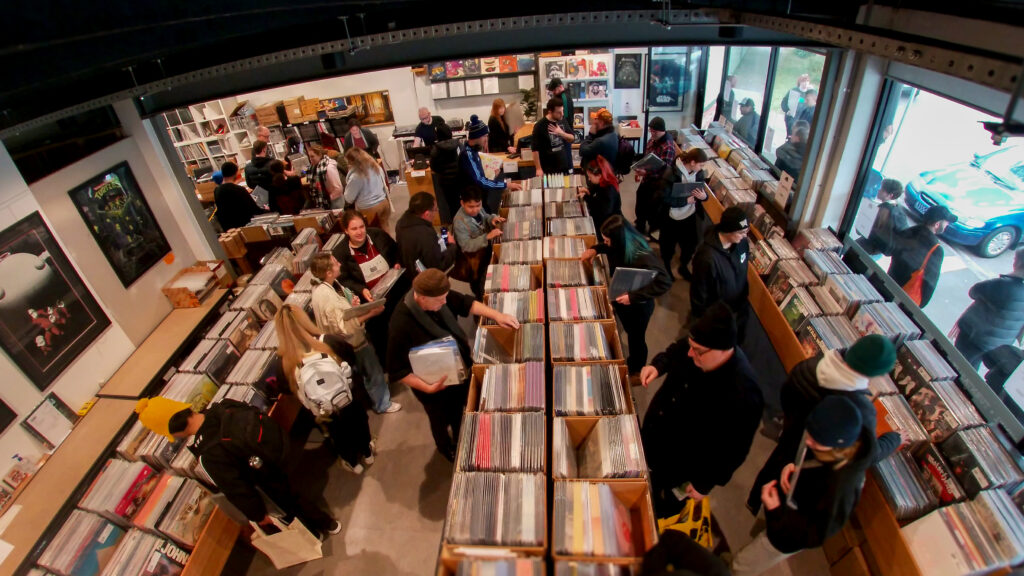“There’s a lot of different people there,” says Farché.“There’s people living in teepees, there’s a lot of communes. Then there’s a lot of more the opposite, like cowboy kind of characters. There’s a whole range of people, so there’s a lot of musicians there; there’s a lot of all kinds of creative people there.”
Farché took his first step into the creative arts at the age of five, when his parents enrolled him in private sculpting lessons. “It was in the realm of ceramics, and in that same school I learnt pottery – making pots and cups and all this kind of shit,” he says. He started playing guitar when he was nine-years-old, which quickly became an all-consuming interest. He cites his Bellingen guitar teacher as his biggest musical influence, both in terms of technical prowess and technological innovation.
“He was a freak,” says Farché. “He was into the early MIDI guitar stuff, so I learnt off him about that end of things. The knowledge of how these early systems worked influenced me being interested in that physical input stuff with any kind of instrument, which has ended up with me building all that kind of stuff.
“I did that for like four years, private guitar tutoring. He was a con guy, nicest dude ever, he was mainly a jazz guy. I’ve seen him play in the last ten years and I still think he’s unbelievable.”
Farché played in various rock and metal bands through his teen years, but his early exposure to MIDI technology opened his eyes to the possibilities of electronic music. Perhaps somewhat inevitably, it wasn’t long before he began experimenting with subversive sound-making methods.
“The reason I first got into electronic music was to add these different sounds to a more conventional rock band formation,” he says. “I already had other bands going, so [MIDI] looked like this way to introduce these different sounds that couldn’t be made by a normal guitar. I was always obsessed with guitar equipment and guitars and everything – I studied this kind of stuff. When I was younger, I was always trying to record things and work out how to record things.”
While music became an obsession, Farché’s introduction to sculpting left him with an ongoing interest in three-dimensional visual arts. It’s impossible to speak about Anklepants without drawing attention to Farché’s custom-built, grotesque head mask, which is distinguished by a large phallus protruding from the nose region. His background in electronic engineering led to the incorporation of animatronics into the head, which gives the phallus the appearance of autonomous movement.
“I’ve programmed the way [the penis] works, but then I can overwrite it with a button on the microphone,” he says. “Most of the animatronics control systems that are used now in films, Anklepants is way more hardcore than that. It’s all custom, I can do whatever I want, there’s no restrictions.”
It’s an audacious claim – that the penis on his face is more technologically advanced than the systems used in films (an industry known for its investment in new technologies). However, Farché can speak with some authority on this matter, given his employment history.
“In year 10 at school I did work experience with a guy called Adam Grace, who has been up until recently the main model maker that runs the biggest jobs in Australia – any film job that comes through, he’s the head of the department for model making,” he says. “He moved to Bellingen for a while and I found his number and did work experience with him. He taught me sculpting and to make a mould of the sculpture and to make a latex head out of it.
“Then after that I wanted to do stop-motion animation, and I wanted to make puppets and stuff for stop-motion animation. In 2000 when I was living in Sydney, I was working shit jobs just to get money. My friend was a runner in Fox Studios and that’s when Star Wars [Episode III: Revenge of the Sith] was being made. Just by chance they needed a runner and I ended up getting a runner job for the creature department. Then they needed a foam lab assistant. I took my stop-motion in – it was like this weird porn of this guy wanking and shit. I showed it to them and the guy just looked at it for a second – this was Dave Elsey [creature shop makeup fX designer] – and he just goes ‘OK you’ve got the job’.”
This stroke of luck gave Farché a golden opportunity to expand his knowledge of design technology and electronic engineering. Eventually he discovered that the early animatronics systems utilised a MIDI interface – a eureka moment that paved the way for the visual presentation of the Anklepants project.
“Now I write all the software, I write all the code in the micro controllers, it’s all wireless,” he says. “Every alteration I make with the sound also has a reflection with the animatronics or something else. I’m working at the moment on video stuff with mapped tracking. Then all the feedback in the microphone and the audio and whatever will control the video as well and it’ll be one big mutation.”
The visual aspects are hugely significant for Farché, and anyone that encounters the masked figure is left with an unforgettable image. Suffice to say, he’s faced plenty of allegations of vulgar gimmickry. However, while the mask can draw a negative response, it serves an expressive purpose.
“It’s hilarious how people are just obsessed with the appearance of things. [The mask]’s the perfect example of that – it works too well. That’s what it was kind of supposed to do – just watch how people go, ‘Look at the disgusting [face]’ or ‘It’s just a gimmick.’ It’s like, ‘Yeah, and you’re just proving to yourself that all you think about is what it looks like.’ There’s so much stuff going on in the music and the technology. To think that it’s just a gimmick is the most lazy way to deal with it.
“The best is when electronic musicians say that. That whole DJ/live electronic music thing is so swept with people standing there posing, twiddling knobs, pressing buttons, that as soon as someone comes in that’s singing and doing way more control than any of their purchased controllers can ever do, they just have to cut it down and say it’s because I’ve got a mask on. If I take the mask off I’m still doing the same thing.”
This sentiment is vindicated by Anklepants’ latest album, Social-Patching-And the Pixel Pageant Facéd Boy, which came out in September. As is his wont, it’s a reinless stylistic exploration, encompassing everything from frightful industrial sounds and eccentrically perverse dance music to contrasting moments of downtempo new wave and electropop. Not only does the record evade easy genre categorisation, but it proves the visual details aren’t Anklepants’ primary distinction. Nevertheless, imagery plays a big part in Farche’s musical decision making.
“These days so much of the music is written as a soundtrack for videos that I’m going to make in the future. But I’m not thinking purely about the character – I’m thinking about what the songs are about. A character is obviously used, but I’m not sitting there going, ‘OK dickface is going to do this.’ The character, I don’t even think that he has a dickface when I think about him. But most of my music, I have to say, is based on a visual idea to start with. I’ve thought of a situation or a past memory. It’s pretty much nearly all soundtrack music.”
BY AUGUSTUS WELBY







